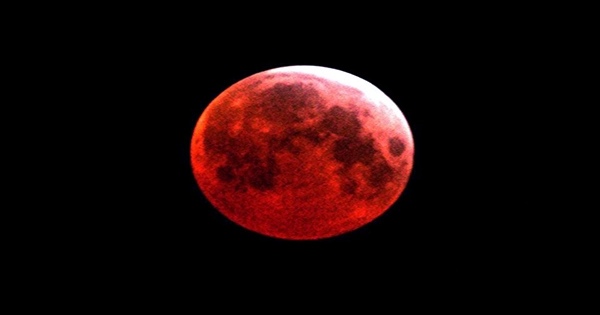Although it sounds like something out of a gothic horror book, a “Blood Moon” is absolutely real, with the only link to blood being its hue. The Moon turns red around twice a year. The phenomenon occurs only during a total moon eclipse and is brought about by the same thing that keeps us alive: the Earth’s atmosphere. In the year 2022, there will be four eclipses. We’ve already seen the first partial solar eclipse, and the first total lunar eclipse will occur on May 15-16. What is a Blood Moon, exactly?
WHAT CAUSES THE MOON TO BE RED? The Moon becomes red in the same way as sunsets and sunrises do. Sunlight is filtered and dispersed by the Earth’s atmosphere. Because blue light scatters less than red light, the sky appears blue during the day but becomes crimson when the Sun is low on the horizon. This has an odd impact. Despite the fact that the atmosphere is little in comparison to the size of the planet, the Earth’s shadow receives some of this diffuse light, turning it red.
The Moon passes Earth’s shadow during a total lunar eclipse, and once entirely hidden, it appears red. It’s a beautiful sight to witness the Moon become darker as the shadow of our planet extends across its silvery surface, eventually turning a crimson color at the time of totality. Unlike solar eclipses, which last only a few minutes and are only visible in a tiny area of the earth, lunar eclipses can last up to two hours and are visible from everywhere on that specific night-side.
WHY DOESN’T THE MOON TURN RED ON A MONTHLY BASIS? Blood moons are uncommon. Eclipses occur in long cycles and are determined by the Sun, Earth, and Moon’s positions. Because the lunar orbit is angled in relation to the Earth’s orbit around the Sun, eclipses can only occur when the three bodies are exactly aligned — in syzygy. In a calendar year, there are around four to seven eclipses, split between solar and lunar eclipses. Total lunar eclipses occur twice a year for a couple of years before a hiatus, whereas solar eclipses occur two to five times a year, with a total solar eclipse occurring every 18 months.
Many people believe that because the Earth’s shadow is red, we should see that coloration on the Moon when it’s near side changes phase, however the shadow cast by the Moon during waning or waxing is not from the Earth. As certain lunar parts transition into sunlight and others into nighttime, the dark zone of phases of the Moon is the Moon’s own shadow.
WHY DOES THE MOON DURING A PARTIAL LUNAR ECLIPSE NOT TURN RED? The reason the Moon becomes red only near totality and not before is that the Moon reflects sunlight brightly, which drowns out the faint colour of the Earth’s shadow. The moment the Moon turns red is also unpredictable since it is heavily influenced by the atmosphere and its nebulosity at the time.
WHAT IS THE DATE OF THE NEXT BLOOD MOON? The next complete lunar eclipse will take place this weekend, on May 15 and 16. Half of North America, most of Central America, and all of South America will be able to see it. Before daybreak, parts of Western Africa and Antarctica will witness the sight. You may also see it live on the Virtual Telescope website. The next one will be visible over the Pacific on November 8, 2022. We’ll have to wait until March 14, 2025 after that.














